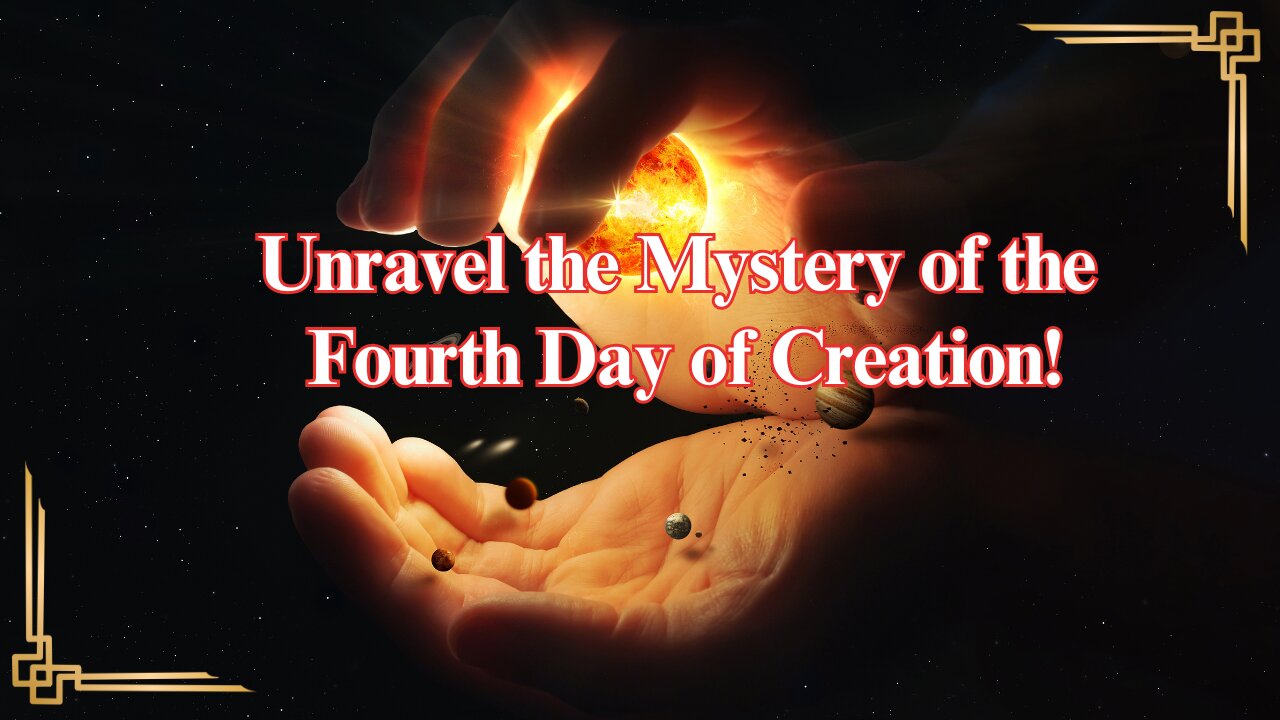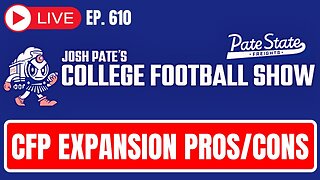Premium Only Content

Unravel the Mystery of the Fourth Day
Breakdown of Genesis 1:14–19 and Its Application
Scriptural Breakdown
Genesis 1:14
The creation of lights in the heavens serves to divide day from night and act as signs, marking appointed feasts, seasons, days, and years.
Signs: Indications or warnings of events to come (Strong's H225 and Webster’s definitions emphasize signals, gestures, or omens).
Feasts: Periodic religious celebrations or sacrifices (Strong's H2282 highlights festivals with ceremonial importance).
Seasons: Appointed or significant times (Strong's 2165 defines these as preordained occasions).
Application: These markers are tools from YAH to guide humanity in time, spiritual awareness, and preparation for divine encounters. They also test faith and commitment.
Genesis 1:15
Lights in the firmament shine upon the earth, providing illumination and separation.
Application: The lights serve as reminders of YAH's provision and presence, guiding us through physical and spiritual darkness.
Genesis 1:16
Creation of the sun (greater light), the moon (lesser light), and stars to rule day and night.
Application: The sun symbolizes wisdom and understanding, guiding us toward clarity. The moon reflects light, representing moral consciousness in darker times, while stars symbolize alternative paths of wisdom and hope.
Genesis 1:17-18
Lights are set in the heavens to provide light, govern time, and separate light from darkness.
Application: These serve as spiritual parallels, teaching us to discern good from evil and to follow YAH's guidance even in challenging circumstances.
Genesis 1:19
The evening and morning mark the completion of the fourth day.
Application: Reflects the rhythm of life, where cycles of light and darkness are part of a divine plan to teach balance and perseverance.
Key Themes and Deeper Applications
Day Four Themes: Tests, Time, and Signs
The lights in the heavens symbolize guidance during life’s tests and the significance of timing in spiritual growth.
Tests of faith, like those mentioned in 1 Corinthians 10:12–13, are opportunities to strengthen moral and spiritual resolve.
Light and Darkness
The sun represents wisdom and clarity, while the moon reflects the light of wisdom, guiding through moral and spiritual dilemmas.
Application: Following YAH’s light allows us to make informed decisions and avoid paths leading to destruction, while ignoring these warnings leads to unnecessary sacrifices.
Warning Signs
YAH provides warnings (red flags) to prevent harm, often through inner conviction, external events, or the advice of others.
James 1:12–13 highlights the blessings of enduring temptation and the assurance of divine guidance.
Seasons and Sacrifices
Relationships, opportunities, and challenges often occur during specific "seasons" in life to test our commitment to YAH.
Recognizing these seasons helps us align with divine timing and avoid turning temporary trials into permanent mistakes.
Moral Clarity and Ethical Decisions
Walking in YAH’s greater light (scriptural principles) provides clarity and prevents poor decisions with long-term consequences. The lesser light (conscience) aids in navigating moral ambiguity when clarity isn’t immediate.
Practical Takeaways
Discernment in Decision-Making
Be attentive to YAH’s warnings, as they help you avoid pitfalls and align with His purpose for your life.
Evaluate decisions through the lens of scriptural morals, values, and ethics.
Navigating Darkness
Use the "lesser lights" (inner conscience or trusted guidance) when life’s path feels unclear. Trust that YAH always provides a way forward.
Understanding Seasons
Recognize that every person or event in your life has a purpose, often as a test of faith or an opportunity for growth.
Aligning with Purpose
Adhering to YAH’s light enables you to create a legacy grounded in righteousness, avoiding sacrifices that deviate from His will.
-
 41:18
41:18
Kimberly Guilfoyle
6 hours agoToday, We Kash in on Equal Justice, Live with Ryan Walters & Daniel Turner | Ep.198
66.2K20 -
 1:36:50
1:36:50
Redacted News
5 hours agoThe TRUTH in Ukraine has been EXPOSED by Trump and they are melting down | Redacted w Clayton Morris
104K152 -
 2:05:35
2:05:35
The White House
6 hours agoPresident Trump Hosts a Reception Honoring Black History Month
64.7K36 -
 1:05:09
1:05:09
Josh Pate's College Football Show
6 hours ago $0.40 earnedCFP Expansion: Latest Intel | CFB’s Schedule Problem | Arch Manning Hype | ACC Program Rankings
15.6K2 -
 55:52
55:52
LFA TV
1 day agoTrump vs. Europe | TRUMPET DAILY 2.20.25 7PM
21K2 -
 31:02
31:02
Chrissy Clark
3 hours agoAn IVF Nightmare, Trump’s Illegal Immigration Crackdown, & Biden’s Student Loan Plan BLOCKED I URS
14.1K7 -
 1:02:57
1:02:57
In The Litter Box w/ Jewels & Catturd
1 day agoKASH CONFIRMATION TODAY! | In the Litter Box w/ Jewels & Catturd – Ep. 746 – 2/20/2025
118K71 -
 56:44
56:44
VSiNLive
4 hours ago $5.49 earnedFollow the Money with Mitch Moss & Pauly Howard | Hour 1
88.2K3 -
 1:08:41
1:08:41
John Crump Live
8 hours ago $2.49 earnedUSA v. Canada! Bigger Than Just A Game
41.4K6 -
 1:58:40
1:58:40
Revenge of the Cis
5 hours agoEpisode 1450: Wet Work
52.1K3